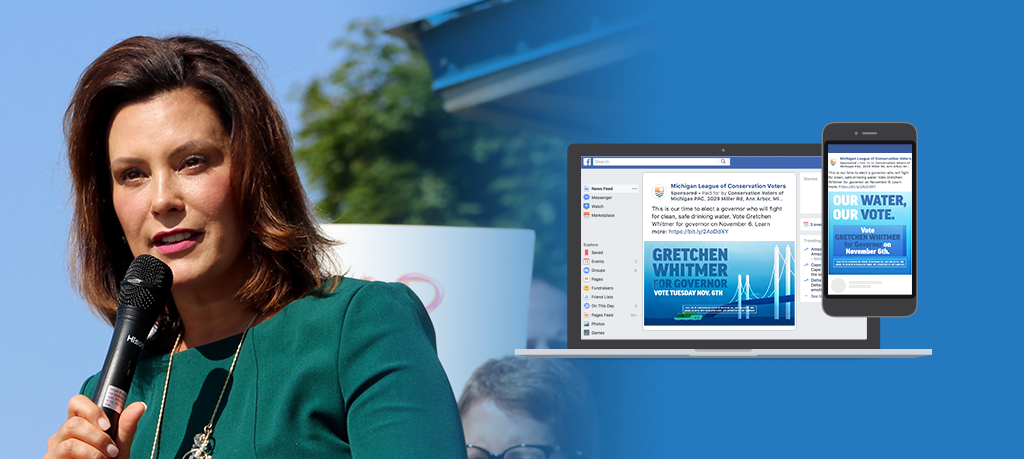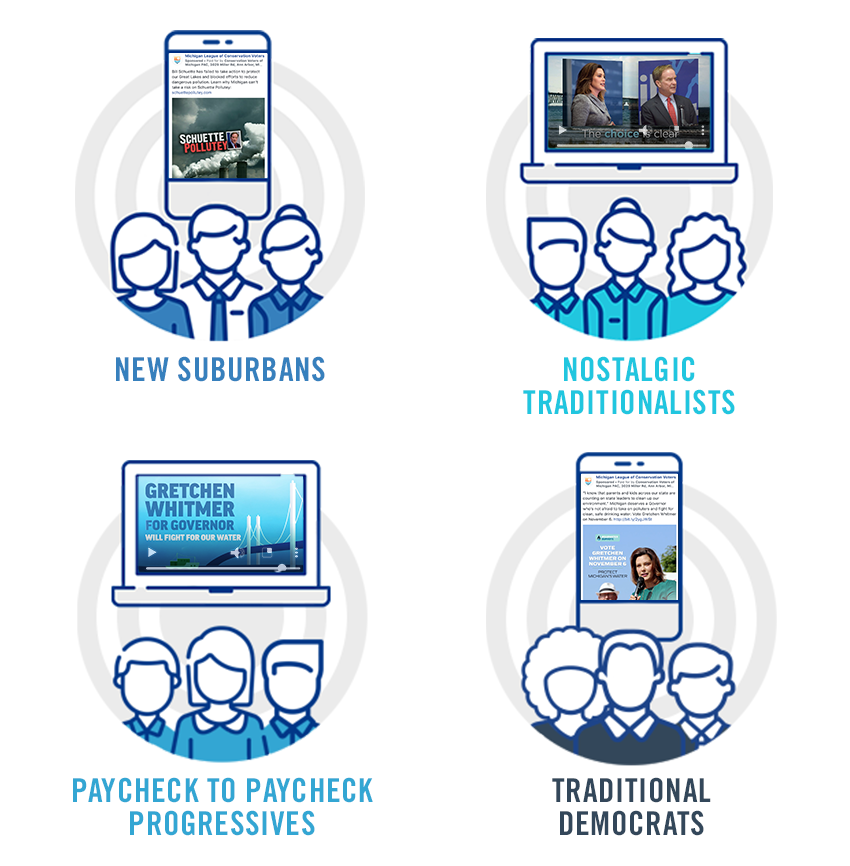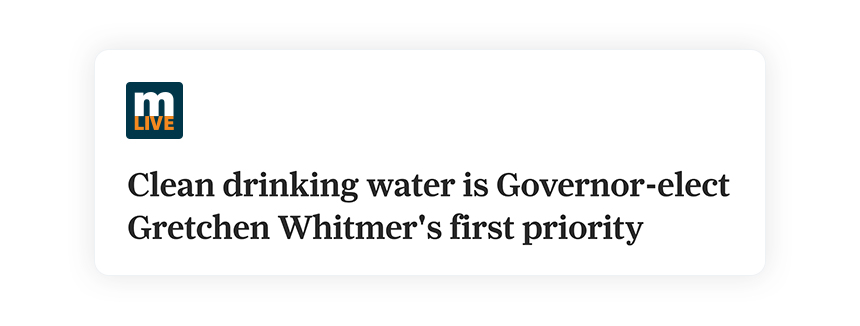
Situation
In 2018’s gubernatorial election, Conservation Voters of Michigan faced a divided electorate, with some historically Democratic-leaning voting blocs (like white, blue-collar voters) moving away from the party, and other key groups (like city dwellers and voters of color) failing to turn out in midterm elections.
Strategy
We worked with Michigan LCV’s Conservation Voters of Michigan PAC and a local consulting group to develop four distinct messages—either supporting Democrat Gretchen Whitmer or opposing Republican Bill Schuette—that centered around Michiganders’ right to clean, safe drinking water. We then conducted in-depth online testing on all four messages, allowing us to discern in a matter of days which creatives were most effective with which groups of voters—and where we were in danger of creating backlash.

Within 24 hours of receiving results from the message test, we launched persuasion and mobilization campaigns that leveraged data from the Peoria Project. We combined individually-targeted preroll and Facebook campaigns with demographically targeted premium video, and focused on ZIP codes that corresponded to CVM PAC’s field program.
Results
By using Peoria Project segments to target voters like “Nostalgic Traditionalists” and “New Suburbans”—who are often lumped into Democrats’ GOTV bucket—with persuasion messaging, CVM PAC was able to make the case for Whitmer to many of the Obama-Trump voters who swung Michigan to the GOP in 2016.
Meanwhile, by using “Paycheck to Paycheck Progressives” and “Traditional Democrats” segments to run a persuasion-based mobilization program that not only reminded these reliably Democratic voters to participate in the midterms, but also—critically—delivered messaging relevant to their communities as to why Gretchen Whitmer deserved their support, we were able to increase turnout among key segments.

In “Working People Won the Midwest for the Democrats,” The Nation’s Mary Kay Henry writes of “a surge of working-class voters across the Midwest—in cities like Detroit, Flint, Chicago, and Milwaukee—who rejected eight years of attacks on working families” and “want a $15 minimum wage, the chance to join a union no matter where they work, and quality, affordable health care.”
Through creative testing, CVM PAC discovered that access to clean, safe drinking water is a major motivating factor to these voters as well.

“Our Water”
GOTV